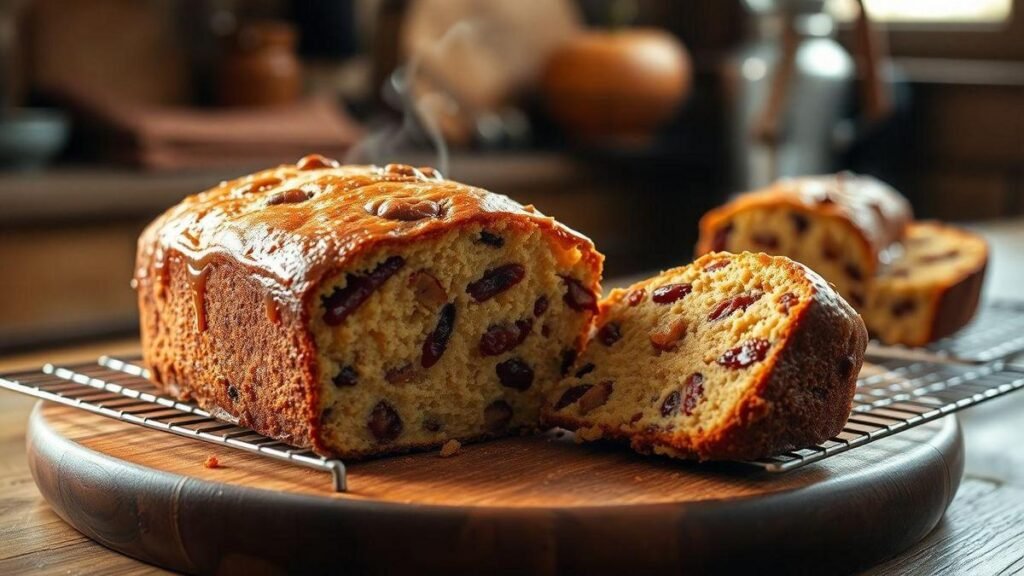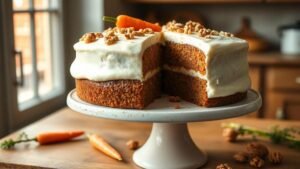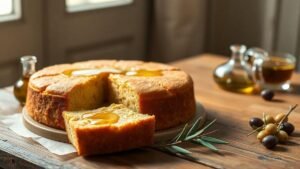I love fruit in cake, but soggy disasters have haunted my baking. In this guide I show how to add fruit to cake without making it soggy — whether using fresh, frozen, or dried fruit. You’ll learn why fruit makes cakes wet and simple fixes: pat dry, lightly coat in flour, use a thicker batter, avoid overripe fruit, and fold gently. Follow these tips and your cake will be fruity, not flop-y.
Quick checklist
- Pat fruit dry before adding.
- Lightly coat fruit in flour so it won’t sink or bleed.
- Use a thicker batter to hold fruit in place.
- Choose firm, not overripe, fruit.
- Fold gently at the end to prevent breaking.
Best ways to add fruit to cake without making it soggy
Baking is part art, part science — and a little taste-testing. Use these practical steps to keep the crumb fluffy while preserving bright fruit flavor. For a full walkthrough of these techniques, see my guide on best ways to add fruit to cake without making it soggy.
- Pat dry: Wash, then blot fruit with paper towels to remove surface water.
- Toss in flour: Lightly coat pieces (about 1–2 tsp flour per cup) to absorb surface moisture and reduce sinking.
- Use a thicker batter: A denser batter supports fruit better than a runny one — if you want a reliably moist crumb, try techniques from my yogurt-based cake method.
- Pick ripe-but-firm fruit: Overripe fruit releases more juice and sugar, which make cakes heavy.
- Fold gently: Add fruit last and fold once or twice to avoid crushing pieces.
Why fruit makes cake soggy
Fruit contains a lot of water and sugar. When fruit breaks down or releases juice during mixing or baking, that liquid soaks into the batter, creating a wet, dense, or gummy crumb. Common causes: high water content, overmixing, too much fruit, and overripe pieces.
Cause → Effect → Fix
- High water content → wet, heavy crumb → pat dry, use less-juicy fruit.
- Overmixing → fruit breaks and bleeds → fold gently at the end.
- Too much fruit → underbaked or dense cake → reduce fruit or layer instead.
- Overripe fruit → extra juice and sugar → choose firm fruit.
Best types of fruit for baking
Some fruit hold up better in cake than others. Choose fruit based on texture and how juicy it is.
| Fruit | Texture in cake | Best use |
|---|---|---|
| Berries (blueberries, raspberries) | Soft, may bleed | Toss in flour; use frozen or fresh |
| Apples | Hold shape well | Chop and mix with cinnamon — you can also adapt recipes that use apple alternatives like an applesauce-based cake for extra moisture control |
| Pears | Firm if not overripe | Thin slices, layer on top |
| Peaches | Very juicy | Peel, pat dry, slice thin |
| Cherries | Good texture | Pit, halve, drain |
| Citrus | Segments can add liquid | Use zest or candied peel instead |
| Dried fruit | Low water, chewy | Soak briefly for plumpness |
Practical tips for adding fruit without a soggy cake
- Drain frozen fruit: Thaw, press out excess liquid, then toss in flour — detailed steps for working with frozen fruit are in my frozen-fruit guide.
- Chop large fruit: Smaller pieces avoid heavy pockets and distribute weight.
- Layer fruit: If using lots of juicy fruit, pour half the batter, add fruit, then pour the rest to keep cake structure. For neat fruit-topped presentations, see techniques for using fruit as a natural cake topping.
- Coat with cornstarch: Use instead of flour to reduce bleeding (especially with berries).
- Lightly sugar: Sprinkle a little sugar on fruit, let sit, then pat dry to draw out and remove some juice before adding.
- Mind oven temp: Baking too low can leave centers underbaked when fruit is heavy — if you run into texture problems, my tips on fixing and preventing cake texture issues can help diagnose the cause.
When to layer fruit instead of mixing it in
Layering can be the best option for very juicy fruits or when you want neat slices.
| Method | Best for | Pros | Cons |
|---|---|---|---|
| Mixing into batter | Small, firm fruits | Even distribution | Can bleed or sink |
| Layering between batters | Very juicy fruit or lots of fruit | Keeps crumb drier, clean slices | Slightly more work |
| Topping the cake | Thin slices or compotes | Attractive, controlled | Fruit may dry on top unless glazed; for attractive fruit arrangements and tips on topping, see how I top cakes with fresh fruit |
Fresh vs frozen vs dried fruit
Each type has rules to prevent sogginess.
| Type | Prep | Notes |
|---|---|---|
| Fresh | Wash, dry, cut | Best flavor; control moisture carefully |
| Frozen | Thaw, drain, pat dry, toss flour | Convenient but can be watery — refer to the frozen-fruit breakdown for extra tips |
| Dried | Soak briefly if needed | Low water, adds chew; use for less moisture |
Flavor pairings — cakes that love fruit
- Yogurt cake: blueberries lemon zest — bright and tender; inspired by my yogurt cake approach.
- Pound cake: cherries almond extract — rich and classic.
- Sponge cake: strawberries whipped cream — light and showy.
- Spice cake: apples cinnamon — cozy and warm.
- Upside-down: pineapple or pear — caramelized and bold.
- Muffins/cupcakes: mixed berries — portable and juicy; for outdoor-friendly cakes that won’t make a mess, see my picnic cake tips.
Extra pro tips
- Cornstarch on fruit reduces bleed and prevents purple streaks from berries.
- Blind-bake tart bases to keep bottoms firm.
- Use citrus zest for bright flavor without extra liquid.
- Slice and serve one piece immediately — for quality control, of course.
Storage
- Cakes with fresh fruit: room temp covered 1 day; fridge 3–4 days; freezer up to 2 months (wrap well).
- Cakes with dried fruit: room temp 2 days; fridge 4–5 days; freezer up to 2 months.
- Frosted fruit cakes: fridge 3–4 days; thaw in fridge if frozen.
Conclusion
Treat fruit like royalty: pat dry, toss in flour or cornstarch, use a thicker batter, and fold gently — or layer juicy fruit. Small tweaks prevent a soggy cake and keep fruit as a juicy, welcome surprise. If you run into trouble with sinks or overly wet crumbs, my write-up on how I saved a sunken cake has a few emergency fixes.
Frequently asked questions
Q: Why does my cake get soggy when I add fruit?
A: Fruit contains water and sugar that can seep into the batter, making the crumb wet and dense. Prevent this by drying fruit, coating it, using less, or layering.
Q: How do I dry fruit before adding it?
A: Wash, then pat dry with paper towels until no drips. For thawed fruit, press out extra juice.
Q: Should I coat fruit in flour and how much?
A: Yes. Toss fruit lightly in 1–2 teaspoons of flour per cup of fruit. This soaks up surface moisture and helps fruit stay suspended.
Q: Can I use frozen fruit? Any extra steps?
A: Yes. Thaw and drain first, pat dry, and toss in flour or cornstarch. Alternatively, use a thicker batter to hold the fruit — see the full frozen-fruit guide for step-by-step help.
Q: When should I layer fruit instead of mixing it in?
A: Layer when the fruit is very juicy or you’re using a lot. Put fruit between batters or on top to keep the crumb from getting soggy.
If you want more baking tips and how I turned blunders into wins, visit https://xendrie.com — I promise I’ll keep the tidal pools to a minimum.






